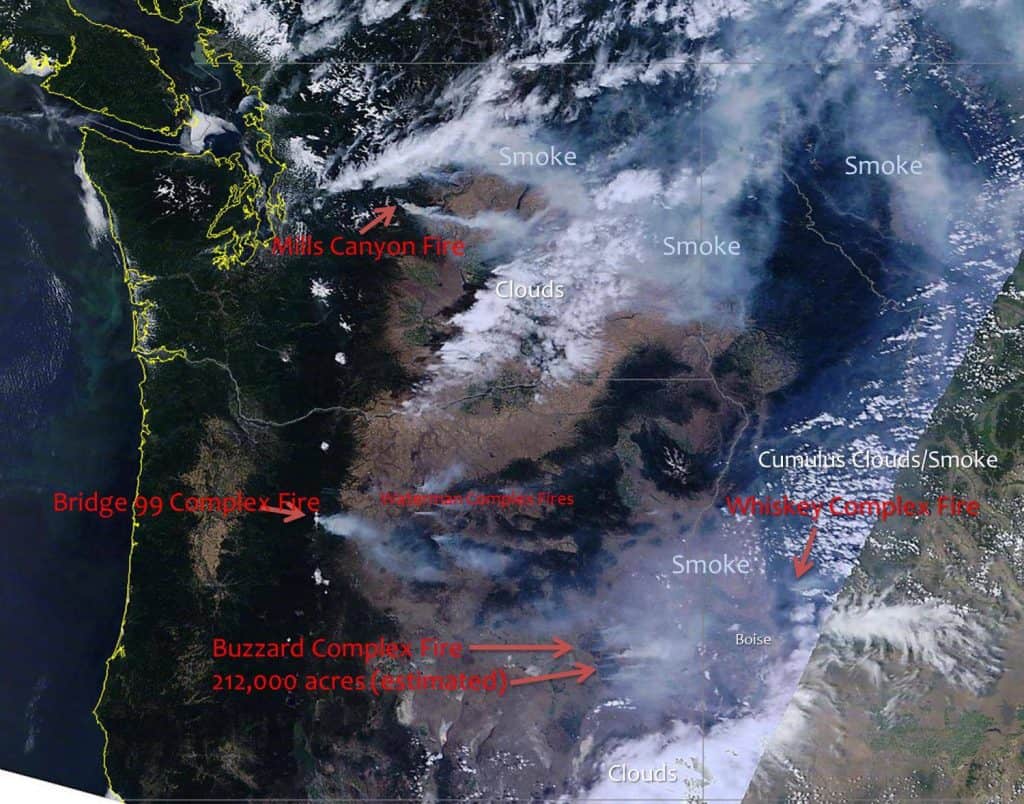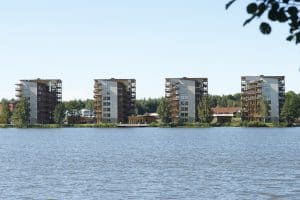The following piece was written by Andy Kerr and is available on his blog here. Kerr describes himself as a “Conservationist, Writer, Analyst, Operative, Agitator, Strategist, Tactitian, Schmoozer, Raconteur.” -mk
The Westerman Bill: The Timber Industry’s Wet Dream
By Andy Kerr
Who wouldn’t want “resilient” (“able to withstand or recover quickly from difficult conditions”) forests? With the name Resilient Federal Forests Act of 2017 (H.R.2936, 115th Congress), what could possibly be wrong with this bill?
Everything. Judge neither a book by its cover nor a bill by its name.
Introduced by Representative Bruce Westerman (R-4th-AR), the bill is the timber industry’s wet dream legislation. In only his second term in Congress, Westerman has received more campaign contributions from Big Timber than any other industry.
The Westerman bill would legislate horrifically harmful public forest policy into law. Among its many sins, the Westerman bill would
· gut the National Environmental Policy Act by giving the Forest Service and the Bureau of Land Management (BLM) essentially a blank check to just start logging in many places for no reason other than getting out the cut;
· gut the Endangered Species Act by letting the Forest Service and the BLM—not the Fish and Wildlife Service or the National Marine Fisheries Service—judge whether federal logging will harm threatened and endangered species;
· gut the Equal Access to Justice Act so citizens and conservation organizations won’t get their costs reimbursed by the federal government for holding the federal government accountable in federal court to follow its own laws (the timber industry could generally still recover fees and costs);
· gut the Roadless Area Conservation Rule to allow wholesale logging in national forest roadless areas;
· gut the Administrative Procedure Act by allowing the federal forest agencies to avoid judicial review for up to 230 lawsuits each year;
· gut judicial review by making Lady Justice put not just her thumb but her butt on the side of the scale favoring Big Timber;
· make it nearly impossible for federal forest agencies to decommission environmentally harmful and fiscally challenging roads;
· gut the National Historic Preservation Act by short-circuiting procedures designed to protect historical resources;
· gut the Secure Rural Schools and Community Self-Determination Act by converting it to a Secure Timber Industry and Community Oppression Act;
· gut the Fair Labor Standards Act to allow children to work in the logging industry;
· gut the National Forest Management Act and the Federal Land Policy and Management Act by allowing national forest and public lands to be transferred to tribal control; and
· essentially require salvage logging after any disturbance regardless of any ecosystem benefits.
I could go on. And I will.
Most particular to the Pacific Northwest, the bill would abolish the survey-and-manage requirement of the Northwest Forest Plan and repeal the “eastside screens” that have protected large trees on eastside (non-spotted owl) Oregon and Washington national forests.
The Westerman bill would effectively transfer all road rights-of-way on BLM lands in western Oregon to private timber interests.
The Westerman bill would statutorily require that 500 million board feet of logs be sold each year off of the O&C lands. (The 2016 BLM resource management plan says a maximum of 278 million board feet annually could be logged and that’s only if you don’t mind older forest being clear-cut, scenic views being marred, watersheds being fouled, and wildlife being displaced).
Let’s focus in, in particular, on the part of Sec. 913 that says
All of the public land managed by the Bureau of Land Management in the Northwest District, Roseburg District, Coos Bay District, Medford District, and the Klamath Resource Area of the Lakeview District in the State of Oregon shall hereafter be managed pursuant to title I of the Act of August 28, 1937 (43 U.S.C. 1181a through 1181e). [emphasis added]
These fifty-seven words would
· exalt the Oregon and California (O&C) Lands Act of 1937 above any and all statutes that came before 1937 (for example, the Antiquities Act of 1906) or after 1937 (such as the Clean Water Act and the Endangered Species Act);
· convert 400,000 acres of BLM public domain lands in western Oregon—federal public lands that were never granted away or taken back for noncompliance with the terms of the grant—to be O&C lands and managed exclusively for timber production;
· effectively override the two presidential proclamations—issued under authority granted by Congress to the president in the Antiquities Act—that established (2000) and expanded (2017) the Cascade-Siskiyou National Monument;
· effectively disestablish the portion of the Wild Rogue Wilderness on BLM land, the Table Rock Wilderness, and the Soda Mountain Wilderness; and
· effectively disestablish the portions of the Sandy, Rogue, Salmon, North Umpqua and Elkhorn Creek wild and scenic rivers on BLM lands, and the Quartzville Creek Wild and Scenic River.
Will the Westerman bill pass the U.S. House of Representatives? Probably, as the Republicans control that body. Representative Greg Walden (R-2nd-OR) is a cosponsor of the Westerman bill, and the bill is expected to easily pass through the House Agriculture Committee. It has already been approved by the House Natural Resources Committee.
A big question is how the four members of Congress from Oregon who are Democrats will vote on the bill. Representatives Peter DeFazio (D-4th-OR), Earl Blumenauer (D-3rd-OR), Kurt Schrader (D-5th-OR), and Susan Bonamici (D-1st-OR) all need to hear from their constituents now. E-mails, phone calls, personal visits to their offices, attending their town hall meetings, and speaking to them while they are out and about in their home district are all appropriate and necessary.
In stark contrast, last Wednesday the Senate Energy and Natural Resources Committee held a hearing on Senators Ron Wyden’s and Jeff Merkley’s Oregon Wildlands Act of 2017 (S.1548, 115th Congress). The bill would, among other good things, establish the Rogue Canyon and Molalla national recreation areas, expand the Wild Rogue Wilderness, establish the Devils Staircase Wilderness, expand the lower Rogue Wild and Scenic River, establish the Franklin Creek, Wasson Creek, Molalla, Nestucca, Walker Creek, North Fork Silver Creek, Jenny Creek, Spring Creek, Lobster Creek, and Elk Creek wild and scenic rivers—all entirely or mostly on BLM lands in western Oregon and mostly O&C BLM lands at that.
Big Timber has long had the goal of exalting the O&C Lands Act of 1937 to override any and all other federal law—making it a combination the 11th Commandment and the 28th Amendment, if you will.
The battle for the heart and soul of low-elevation older (mature and old-growth) forest in western Oregon is joined. The timber industry has not been successful in court; will it be successful in Congress?
I am reminded of the words of that great environmentalist Thomas Paine, who said (now I’m recalling this from memory so it may not be exactly how Tom said it):
These are the times that try people’s souls. The summer soldier and the sunshine patriot will, in this crisis, shrink from the service of their planet; but s/he that stands by it now, deserves the love and thanks of man, woman, descendant, forest, watershed, viewshed, and wildlife.
Big Timber, like hell, is not easily conquered; yet we have this consolation with us, that the harder the conflict, the more glorious the triumph.




